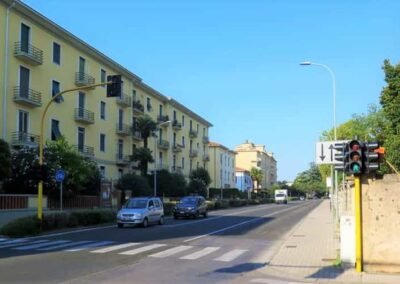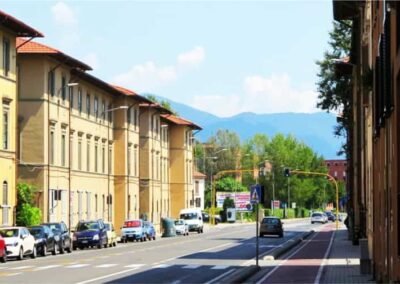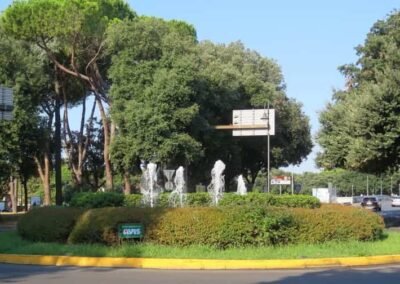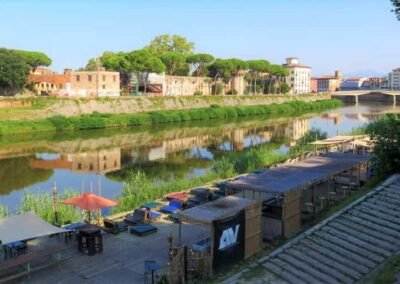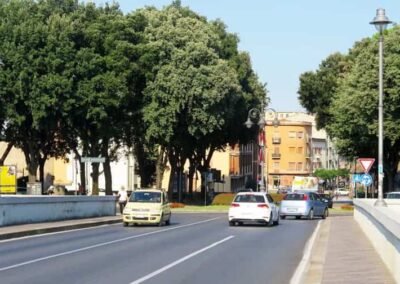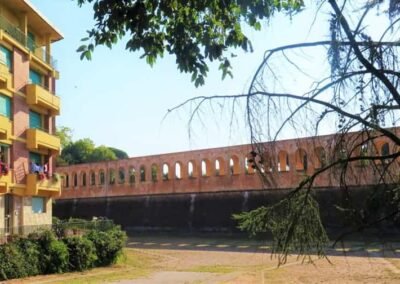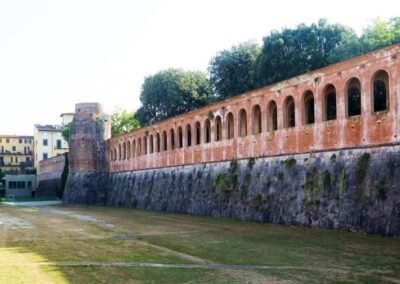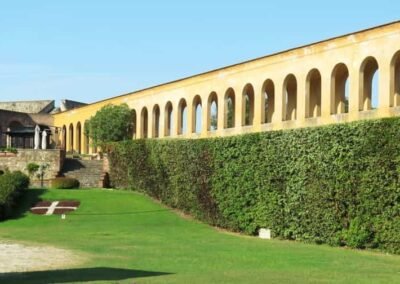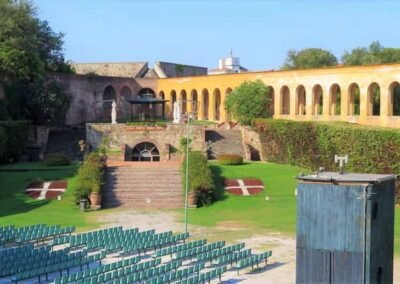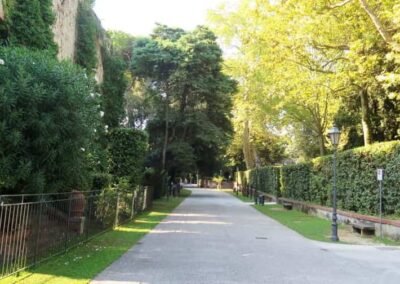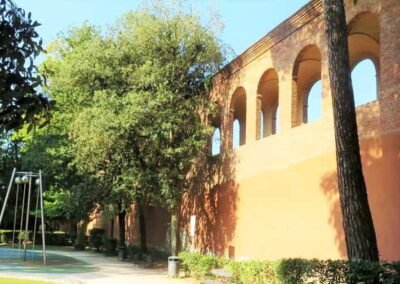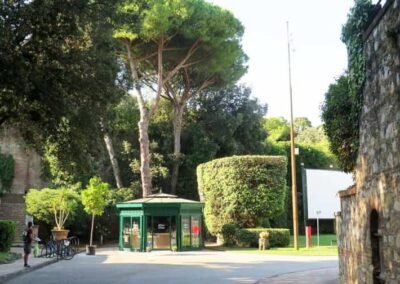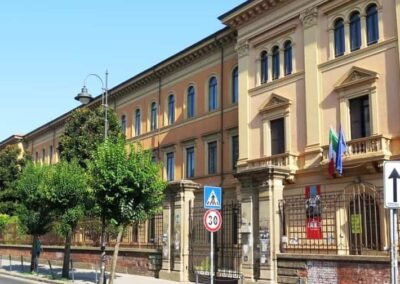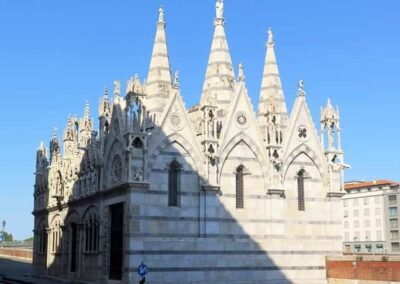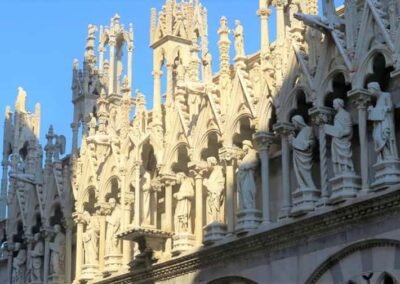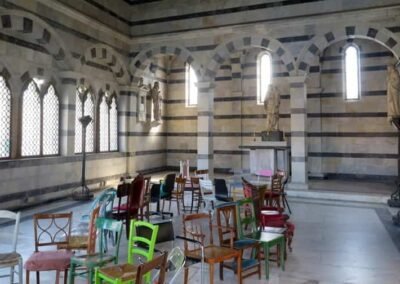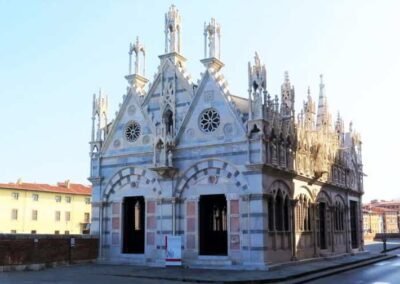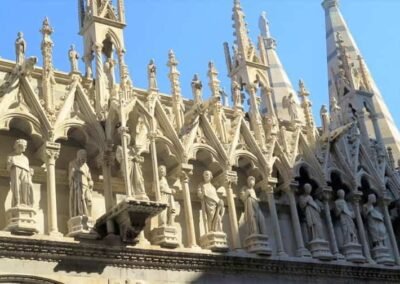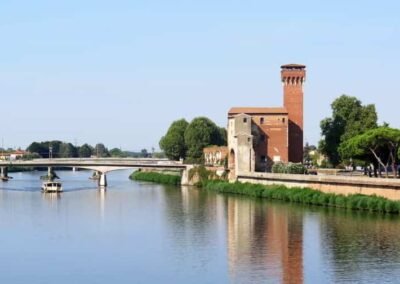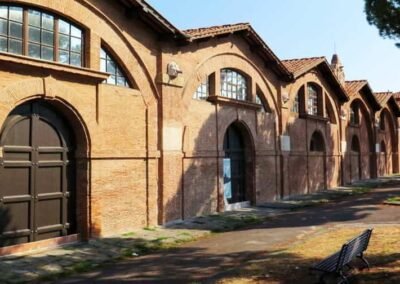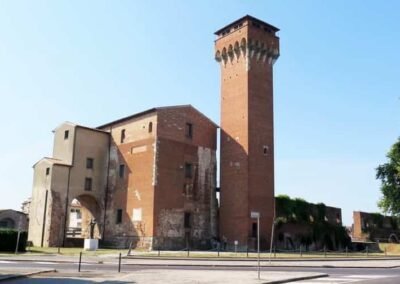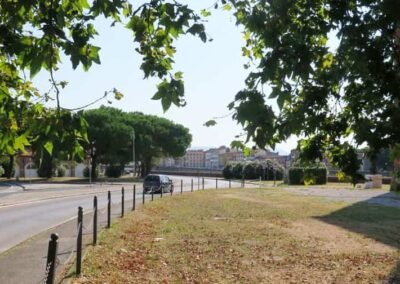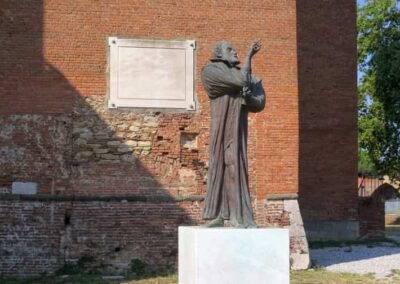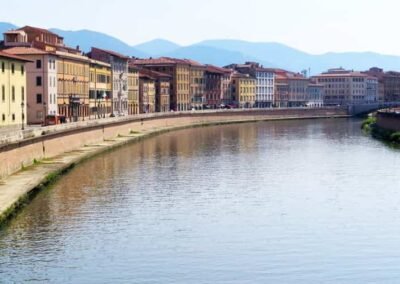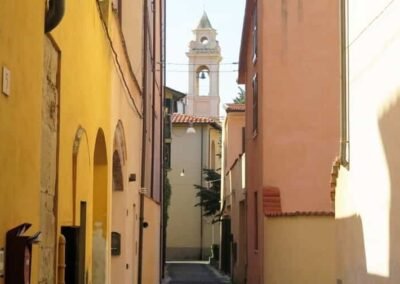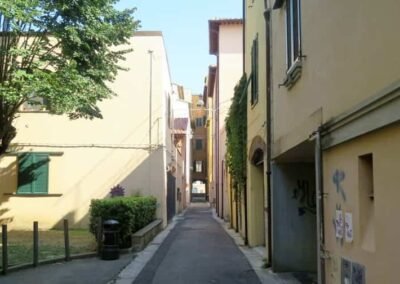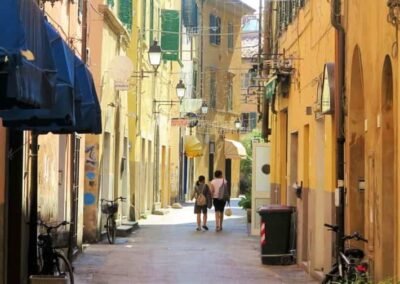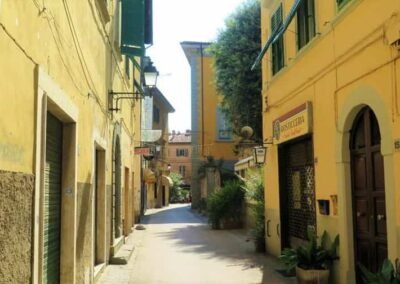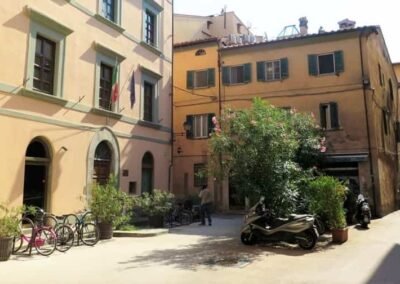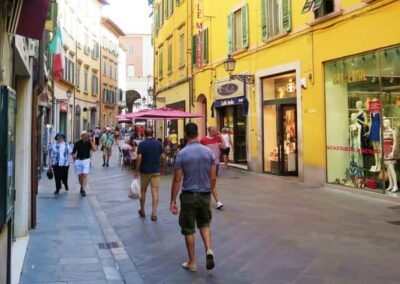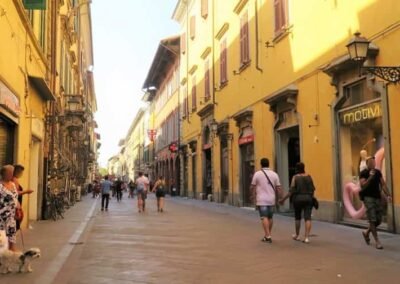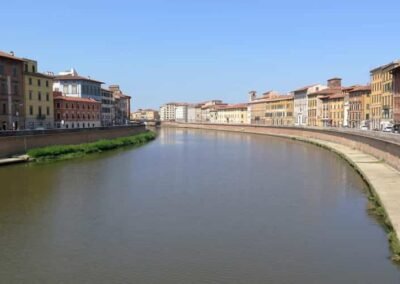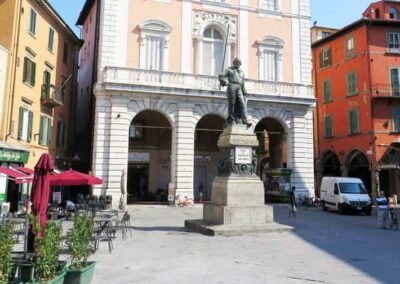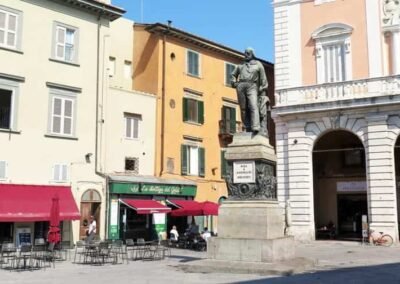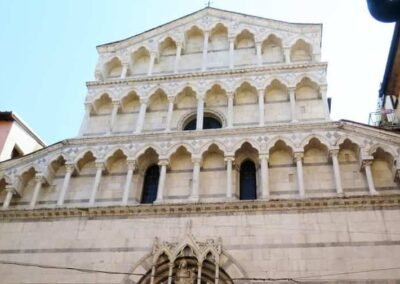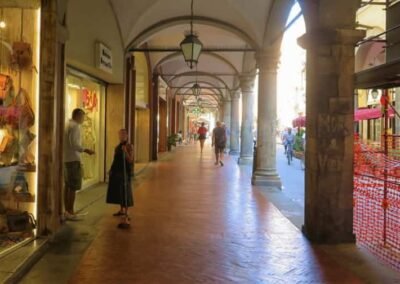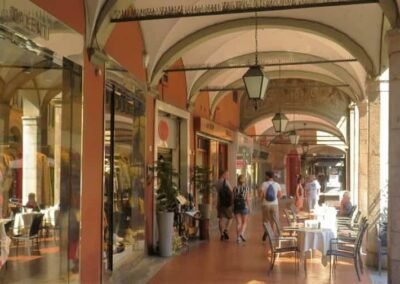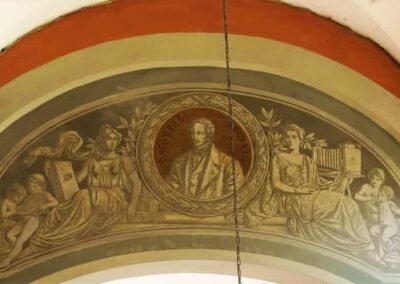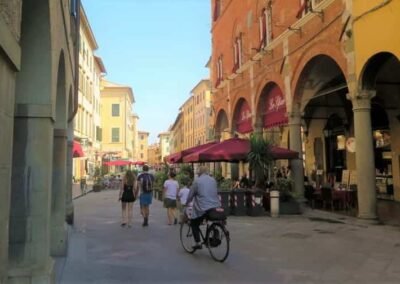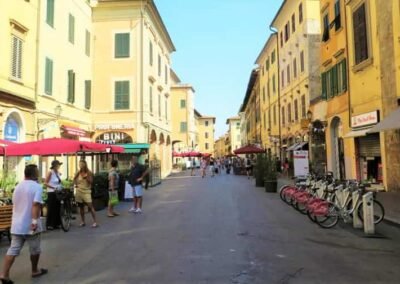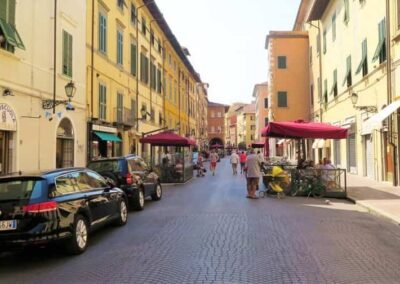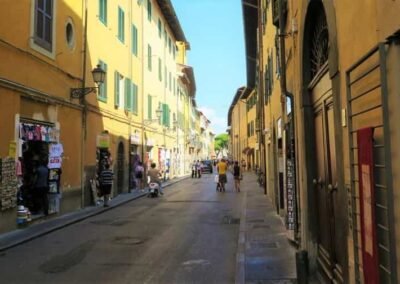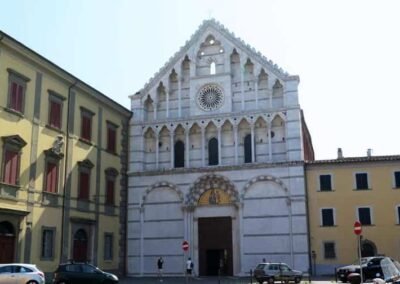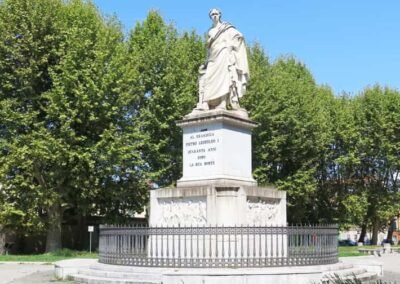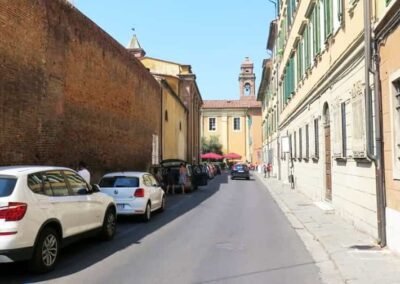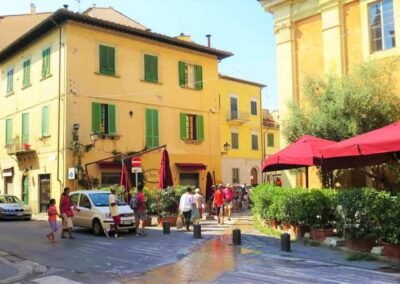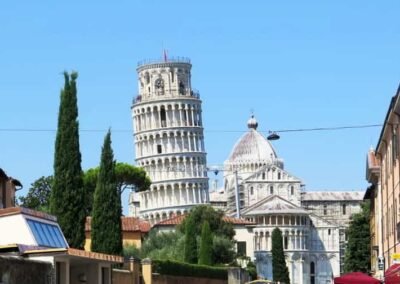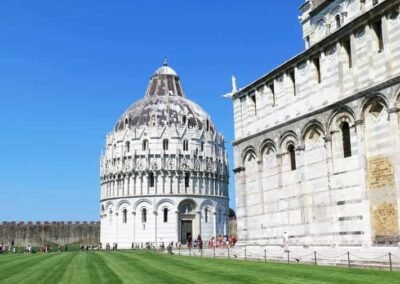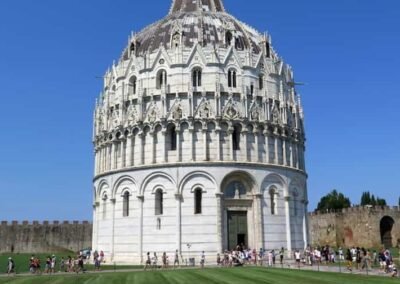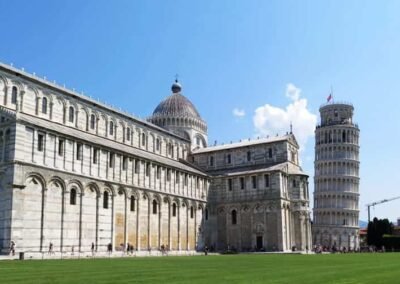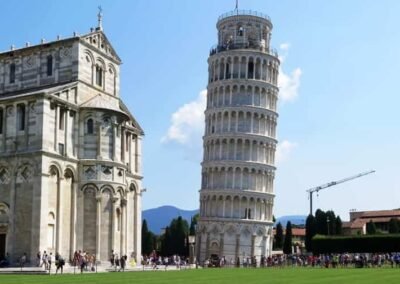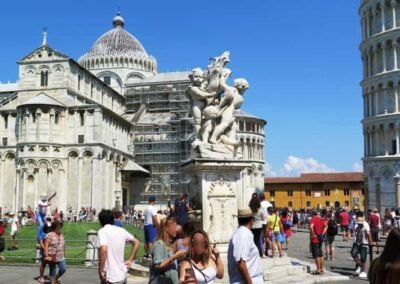HOME
THE REGIONS OF ITALY
PLACES IN ITALY
Italy in Photos
Via Cardinale Pietro Maffi, 56123 Pisa, Italy (August 2018)
Pisa
Pisa, a city renowned globally for its iconic Leaning Tower, offers far more than just a picturesque backdrop for tourist photographs. Situated in the Tuscany region of Italy, Pisa is a vibrant city with a rich history that spans over two millennia. Its charm lies not only in its famous architectural marvels but also in its fascinating history, cultural heritage, and the lively atmosphere that pervades its streets. From ancient Roman roots to its time as a medieval maritime power, Pisa is a city that has played a significant role in shaping the course of Italian and European history. Pisa’s history is as intriguing as its architecture. The city’s origins date back to the Etruscans, but it flourished under Roman rule, becoming an important port and trade hub. As the Roman Empire declined, Pisa managed to retain its prominence, eventually rising to become one of the powerful Maritime Republics in the Middle Ages, alongside Genoa, Venice, and Amalfi. During this period, Pisa’s influence extended across the Medidei Miracoli (Square of Miracles), where the Leaning Tower, the Cathedral of Santa Maria Assunta, the Baptistery, and the Camposanto Monumentale form a stunning ensemble of Romanesque architecture.
Pisa’s decline began in the late Middle Ages after its defeat by Genoa in the Battle of Meloria in 1284. The loss of its naval supremacy marked the beginning of a period of decline, which continued as the Arno River silted up, making Pisa’s port less accessible. Despite these challenges, Pisa managed to retain its cultural and academic significance, particularly with the founding of the University of Pisa in 1343, which remains one of Italy’s most prestigious universities today. The Piazza dei Miracoli is undoubtedly the heart of Pisa’s tourist appeal. The Leaning Tower, a freestanding bell tower known globally for its unintended tilt, is the centrepiece of this square. Construction of the tower began in 1173, and due to the unstable subsoil, the structure began to lean even before the third story was completed. Despite numerous attempts to correct the tilt over the centuries, the Leaning Tower stands as a testament to medieval engineering, attracting millions of visitors annually.
However, the Leaning Tower is just one part of the architectural brilliance on display at the Piazza dei Miracoli. The Cathedral of Santa Maria Assunta, with its richly decorated façade and stunning interiors, is a masterpiece of Pisan Romanesque architecture. The Baptistery, dedicated to St. John the Baptist, is the largest in Italy and is renowned for its acoustics and the remarkable pulpit carved by Nicola Pisano. The Camposanto Monumentale, an ancient cemetery, is believed to have been built over sacred soil brought back from Golgotha during the Crusades, and its cloistered quadrangle offers a serene space filled with historical frescoes and Roman sarcophagi.
While the Piazza dei Miracoli is a major draw, Pisa has much more to offer. The city’s historic centre, with its narrow streets, ancient churches, and bustling squares, provides a glimpse into the rich cultural life of Pisa. The River Arno, which runs through the city, offers scenic views and is lined with elegant palazzi that date back to Pisa’s days as a maritime power. The University of Pisa contributes to the city’s youthful and intellectual atmosphere. With a history spanning nearly seven centuries, it has been a centre of learning and innovation. Famous alumni include Galileo Galilei, who is said to have conducted his famous experiments on gravity from the Leaning Tower. The city’s museums, such as the Museo Nazionale di San Matteo and the Museo dell’Opera del Duomo, house impressive collections of medieval and Renaissance art, offering a deeper understanding of Pisa’s cultural and artistic heritage. Pisa is also known for its vibrant cultural scene. The city hosts several festivals throughout the year, the most famous being the Luminara of San Ranieri in June, where thousands of candles light up the buildings along the Arno, creating a magical atmosphere. The Regatta of San Ranieri, a historic boat race, and the Gioco del Ponte, a historical re-enactment that takes place on the Ponte di Mezzo, further showcase Pisa’s rich traditions and community spirit.
Pisa is a city that invites exploration beyond its iconic Leaning Tower. Its rich history, stunning architecture, vibrant cultural scene, and dynamic university atmosphere make it a fascinating destination in Tuscany. Whether you’re strolling through the historic streets, admiring art in a museum, or enjoying a lively festival, Pisa offers a diverse and enriching experience that captures the essence of Italian history and culture.
Worth a Visit
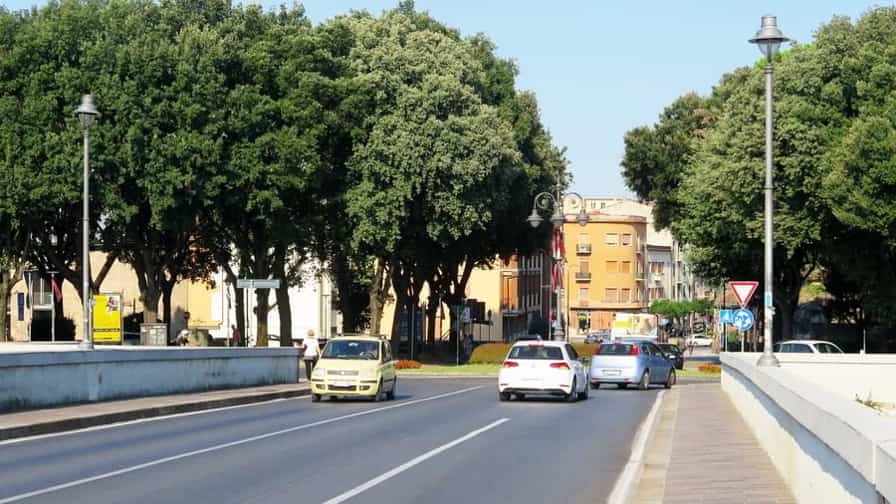
Ponte della Vittoria is one of the key bridges crossing the Arno River in Pisa, Italy, linking the northern and southern parts of the city. Built in the early 20th century, it was named to commemorate Italy’s victory in the First World War, reflecting the spirit of national pride and resilience of that era. The bridge has undergone several reconstructions, particularly after suffering damage during the Second World War, yet it remains an important landmark in Pisa’s urban landscape. Unlike the city’s medieval or Renaissance bridges, Ponte della Vittoria is more modern in design, with a functional elegance that contrasts with the surrounding historic architecture. Today, it serves not only as a practical connection for traffic and pedestrians but also as a vantage point, offering sweeping views of the Arno and Pisa’s skyline. The bridge embodies a blend of history, memory, and daily life in this Tuscan city.
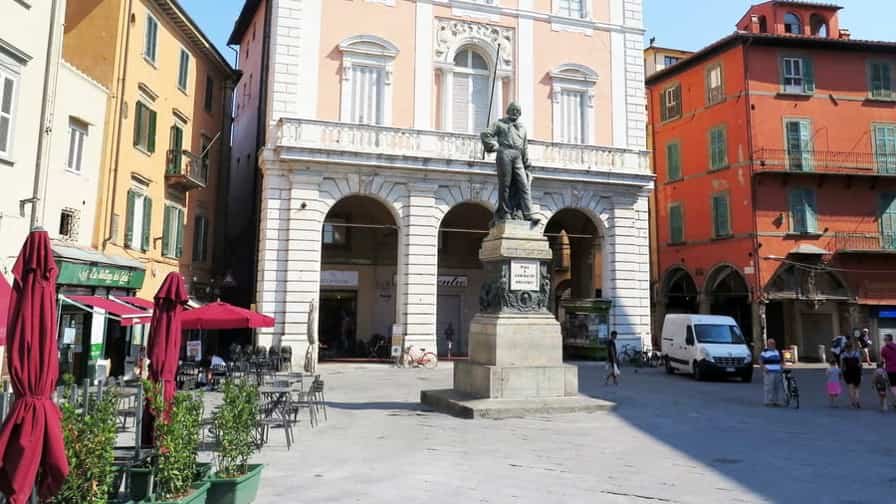
Piazza Garibaldi is a vibrant square in the heart of Pisa, located at the northern end of Ponte di Mezzo, one of the city’s most important bridges across the Arno River. Named after Giuseppe Garibaldi, the celebrated hero of Italian unification, the square is both a historic and social hub, often filled with the lively energy of students, residents, and visitors. Its central position makes it a natural meeting point, connecting the bustling Corso Italia on the south bank with Borgo Stretto, one of Pisa’s most elegant streets lined with arcades, shops, and cafés, on the north. The square is adorned with a statue of Garibaldi, which gives it symbolic value as well as aesthetic charm. Piazza Garibaldi is not just a crossroads of movement, but also of culture and daily life, offering a place where history, commerce, and leisure come together in the fabric of the city.
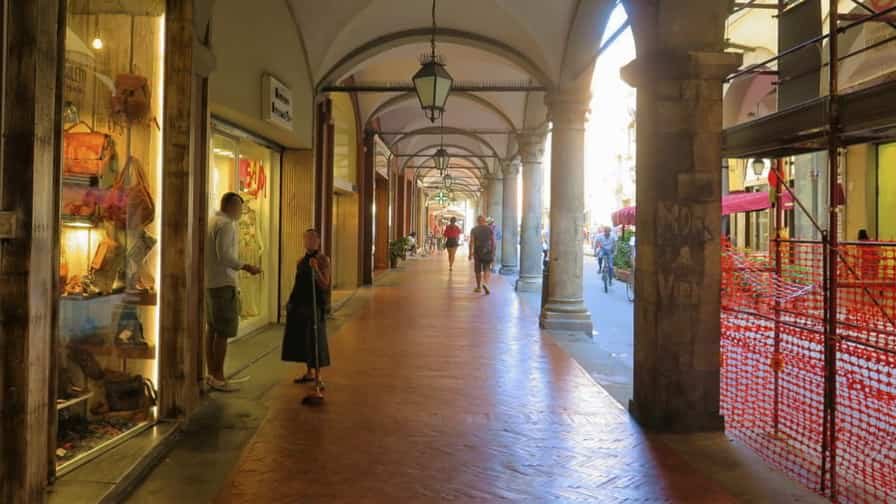
Borgo Stretto is one of the most charming and historic streets in Pisa, running through the heart of the city on the northern side of the Arno River. Known for its elegant medieval arcades, it is lined with shops, boutiques, cafés, and traditional businesses that create a lively yet refined atmosphere. The street has long been a central artery of Pisan life, once home to noble families and merchants, and it still preserves much of its historic character. Walking along Borgo Stretto, visitors can admire the architectural details of its palaces and arcades, while also enjoying the vibrant rhythm of daily life. The street connects naturally with Piazza Garibaldi and extends toward other key areas, making it both a cultural and commercial hub. Today, Borgo Stretto embodies the blend of history and modernity that defines Pisa, offering a unique experience where past and present meet seamlessly.
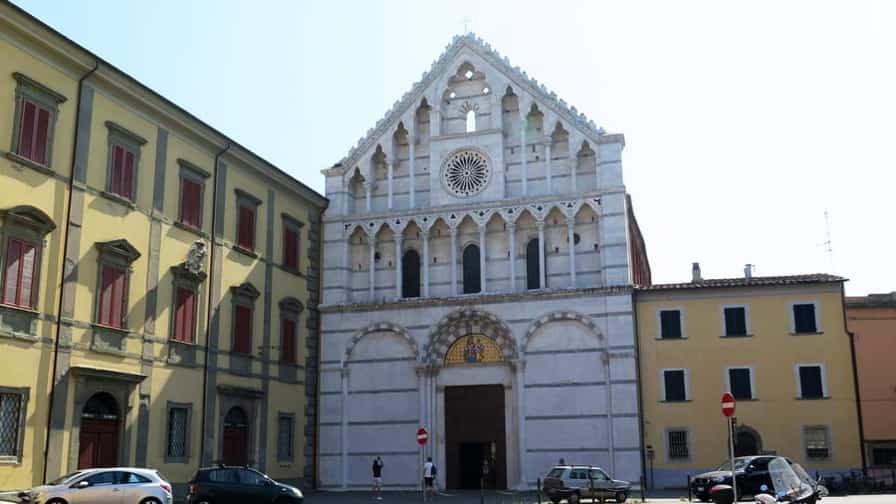
The Chiesa di Santa Caterina d’Alessandria is a remarkable Gothic church in Pisa, located just north of the city centre near Piazza Santa Caterina. Built in the 13th century by the Dominican Order, it was dedicated to Saint Catherine of Alexandria, a figure venerated for her wisdom and martyrdom. The church is a fine example of Pisan Gothic architecture, with its tall façade, elegant pointed arches, and striking rose window that dominate the square. Inside, the spacious nave and side chapels house significant works of art, including paintings and sculptures by Tuscan masters, reflecting the religious and artistic vitality of medieval Pisa. The church has long been a centre of devotion and learning, closely tied to the Dominican tradition. Today, Santa Caterina d’Alessandria remains both a place of worship and a cultural landmark, offering visitors a glimpse into Pisa’s spiritual heritage and architectural splendour.
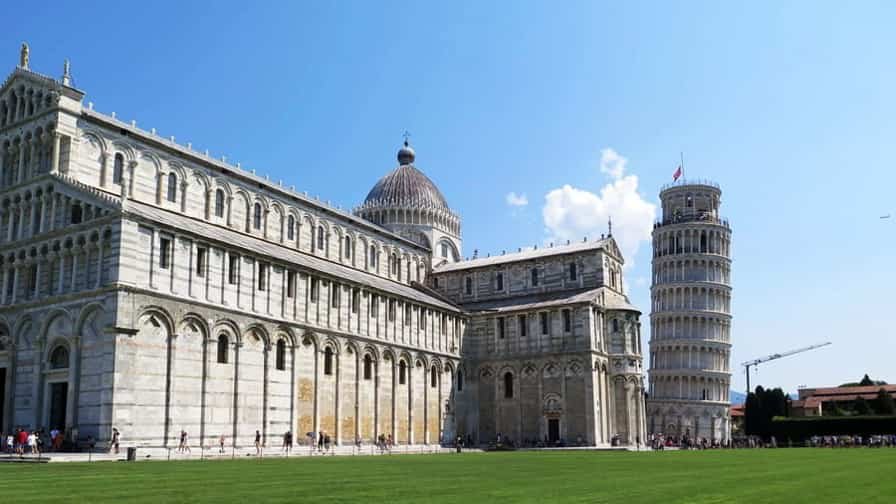
Piazza del Duomo, located in the heart of Pisa, is one of the most famous and historically significant squares in Italy. Often called the “Piazza dei Miracoli” or Square of Miracles, it is renowned for its extraordinary collection of medieval architecture. The square is dominated by the iconic Leaning Tower of Pisa, whose unique tilt has captivated visitors for centuries. Surrounding it are other remarkable monuments, including the Pisa Cathedral, the Baptistery, and the Camposanto Monumentale, each showcasing exquisite Romanesque artistry. The piazza’s carefully maintained green lawns and open spaces enhance the grandeur of these monuments, creating a striking visual harmony. Beyond its architectural significance, Piazza del Duomo serves as a cultural and tourist hub, attracting millions of visitors who come to admire, photograph, and explore Pisa’s rich heritage. It remains a symbol of the city’s artistic, historical, and spiritual legacy.
Photo Gallery of Walk 1 – Via Carlo Matteucci to Ponte Solferino
Approximately 3.14 km – 1.95 miles
The walk starts in Via Carlo Matteucci – Lungarno Bruno Buozzi – Ponte della Vittoria – Piazza Toniolo Giuseppe – Via di Fortezza – Giardino Scotto – Via Croce Benedetto – Piazza Vittorio Emanuele II – Largo Padri della Costituzione – Piazza Sant’ Antonio – Via Sant’Antonio – Lungarno Gambacorti – Ponte Solferino – Lungarno Ranieri Simonelli – Piazza di Terzanaia – Walk back to Ponte Solferino
Photo Gallery of Walk 2 – Via Del Mecherini to Piazza del Duomo
Approximately 2.12 km – 1.32 miles
The walk starts in Via Del Mecherini – Via la Maddalena – Via la Nunziatina – Corso Italia – Ponte di Mezzo – Piazza Garibaldi – Borgo Stretto – Via Giosuè Carducci – Piazza Santa Caterina – Piazza Martiri della Libertà – Via Santa Caterina – Via Carlo Fedeli – Via Cardinale Pietro Maffi – Piazza del Duomo
COPYRIGHT © 2018-2025 ITALY IN PHOTOS - ALL RIGHTS RESERVED
